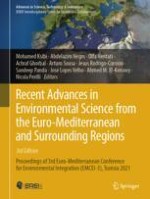2024 | OriginalPaper | Buchkapitel
Evaluation of WAPOR for the Estimation of the Annual Rainfed Crops Biomass, Tunisia
verfasst von : Itidel Alaya, Insaf Mekki, Mariem Boukari, Salah Ben Youssef, Frederic Jacob, Rim Zitouna-chebbi
Erschienen in: Recent Advances in Environmental Science from the Euro-Mediterranean and Surrounding Regions (3rd Edition)
Verlag: Springer Nature Switzerland
Aktivieren Sie unsere intelligente Suche, um passende Fachinhalte oder Patente zu finden.
Wählen Sie Textabschnitte aus um mit Künstlicher Intelligenz passenden Patente zu finden. powered by
Markieren Sie Textabschnitte, um KI-gestützt weitere passende Inhalte zu finden. powered by
